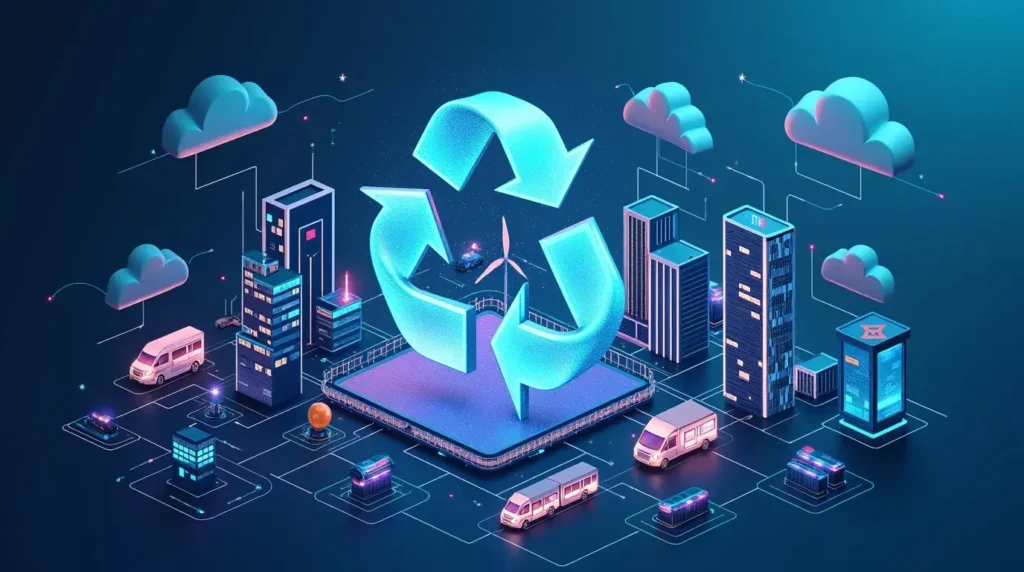Is e-waste becoming a challenge?
In a single year, we produce around 50 million tons of e-waste. This is the same weight of all commercial airplanes produced ever. Unless things change, it is believed that it will get worse and probably get 2x by 2050. E-waste includes all those electronics parts that can’t be use anymore including smartphones, computers, and TVs. Shockingly, it is estimated that only about 20% of discarded electronics are recycled properly. When these devices are sent to landfills, they can release harmful substances such as lead and mercury into the soil and water, posing serious health risks to workers, communities, and the environment. Repairing, reusing and recycling electronic equipments as much as possible is another good way of minimising the impact of e-waste on the environment. In this blog, we’ll read the impact of e-waste, how to tackle your gadgets (probably the e-waste), gathering dust at home.
Why is e-waste a concern?
E-waste can be described as unwanted or old electronic and electrical devices, like smartphones and computers, as well as refrigerators and almost anything else that is operated by electricity. This waste is dangerous since it contains the presence of hazardous substances such as mercury, lead, beryllium, cadmium, brominated flame retardants, and toxic gases. For example, the manufacturing of a laptop may release as much as 227 to 270 kilograms of carbon dioxide. Now let’s see why e-waste has become a growing concern globally today.
- Rapid increase in e-waste
E-waste volume is growing exponentially. In 2022, e-waste grew to 62 million tonnes, It is believed that it will increase up to 82 million tonnes in 2030. This has happened because the advancement of technology has been taking place very rapidly, and hence the product life cycle has been decreased.
- Environmental impact
E-waste has a dangerous impact on the environment. If lead, mercury, among other substances get into the soil and water without being disposed off, it contaminates them, eventually causing damage to the ecosystem and biodiversity.
- Health risks
E-waste exposure has serious health hazards for the recycling workers, especially in developing countries. This has a direct impact on neurological and respiratory system caused by toxic substances.
- Data breaches & identity theft
An inappropriate way to dispose of electronic devices may cause data breaches and identity theft due to sensitive information that may be accessed if not wiped off in a secure way on the devices.
- Economic consequences
E-waste includes valuable metals including gold and copper, but they only recycle up to 17% of their materials. Unutilised worth is huge since in 2019 it has been at a rate of $57 billion.
- International inequities
Developed countries primarily export e-wastes to developing countries for disposal. Ethical issues arise because these countries may not have the proper infrastructure for safe management.
- Need for sustainable solutions
Improving recycling technologies, public awareness of proper disposal methods, and policies promoting sustainable product design and longevity are needed to solve the e-waste crisis.


3R’s of IT
To safeguard your business and the environment from the hazards that outdated electronics cause, old equipment needs to be repaired, repurposed, and recycled by an accredited IT recycling service. Responsible companies that are R2 certified carry out many procedures on your old equipment to prevent it from becoming wasteful.
- Repair
When a certified IT recycling service receives your old IT equipment, they test it according to R2 standards to determine if the devices can be repurposed. If any primary or secondary functions can be restored, the devices are refurbished and repaired. Both the testing and refurbishment processes are documented.
- Re-use
Once refurbished, the devices are remarketed to sell them. Some of the profit goes back to the original owner. Common consumers include school districts, wholesalers, resellers, and communities that really need the units.
- Recycling
Other electronic equipment that are non-reusable instead of waste disposal, dismantled to gather as much residue materials and elements for reuse, this includes reusuable valuables. These kinds of electronic are shredded to the smallest forms. Materials including copper, glass, silver, metal, and aluminum are all extracted and manufactured in new production to reduce extracting new natural materials in carbon emissions as well as damages on the environment.
Significance of e-waste management
Since technology changes rapidly and a greater number of people demand modern devices, this is one of the fastest growing types of waste in the world. Let’s talk about why it’s so crucial to manage e-waste, what obstacles stand in our way of doing that, and what is waiting for us ahead in e-waste management.
Safe disposal of e-waste
It is highly essential to dispose of e-waste in a safe manner to prevent harming the environment and our health. Here are some safe ways to dispose of e-waste:
- Take your e-waste to a certified e-waste recycler. They follow strict rules to make sure everything is handled safely and responsibly.
- Donate working electronics to a non-profit or a school.
- Contact the manufacturer of your device and ask if they have a take-back program.
- Use an e-waste drop-off spot set up by your local government or waste management service.
- Never throw e-waste in the regular trash.
Environmental benefits of e-waste recycling
- Minimises hazardous substances
E-waste contains dangerous metals that aren’t biodegradable. They harm vegetation, flora and fauna, as well as mankind. When e-waste is simply thrown onto landfills and heaps, their toxins can wreak havoc on fauna and natural habitats. Besides, several hazardous materials from the e-waste are also cancer-causing. That poses quite a bit of a danger for human survival.
- Cleans the air, soil and water
It could lead to emissions of harmful smoke, toxins, and pollutants into the environment. Such risks not only pose a health hazard to man but also distort the nitrogen and oxygen levels in the atmosphere on which plants and water organisms depend to live. As electronics do not decompose easily, careless disposal can lead to hazardous toxins damaging our surroundings.
- Save landfill usage
When e-waste is disposed of improperly, it usually ends up in landfills or with unregulated waste handlers who dump it there. This can lead to toxic materials leaching into the ground and contaminating water sources. By recycling e-waste, you help reduce the number of landfills and protect the environment, especially our water bodies, thanks to the responsible practices of certified recyclers.
- Reduces air pollution
The first advantage of recycling e-waste is that it reduces pollution in the air. Burning of old electronics releases harmful gases into the air, whereas recycling of the same electronics helps keep the atmosphere clean. Therefore, recycling is an activity that positively impacts air quality.
- Protecting the environment from toxic substances
E-waste recycling ensures that the environment is safe from dangerous and toxic materials that may harm people’s health. Most electronics have harmful substances, such as lead, mercury, chromium, and cadmium. The recycling of these devices ensures that these toxins do not end up in our air, soil, and water. If we don’t recycle them properly, we risk poisoning our natural resources with dust and waste from mining and incineration.


- Natural resources savings
Parts for your electronics come from mining that produces significant quantities of greenhouse gases and other pollution. These extraction processes emit hazardous substances responsible for environmental degradation and global warming.
- Social benefits
Giving old materials a new life can benefit both your community and those in need. Computers form more than half of all recyclable materials, while many old machines are still workable. In order to ensure that the electronics donated are actually recyclable, their condition has to be ascertained first.
- Recycling non-renewable materials
Many materials in new electronics can be used in future products. Recycling e-waste is a smarter use of resources rather than dumping it in landfills because we would not have to extract new metals and materials for your next gadget.
- Brand image
Eco-friendly practices are the key thing for today’s businesses to attract awareness and commit to sustainability and prove their inner commitment. Organisations strive to maintain sustainability to attract higher customers and stay in business stably for their employees.
Wrapping up
E-waste is a very big issue requiring attention and the proper handling with care. Through responsible disposal when discarding the old electronics properly and recycling them when feasible, we are making a difference and ensuring the safety of the planet, thus securing healthy long-term well-being. It does not just benefit the environment in the eradication of destructive toxins that pollute it but will also help avert waste for some valuable and vital resources while slashing the carbon footprint for newer gadget manufacturing. Both people and companies should raise the stakes with respect to making proper arrangements regarding the disposal of e-waste if a sustainable life for the existing population as well as future inhabitants is to be accomplished.

